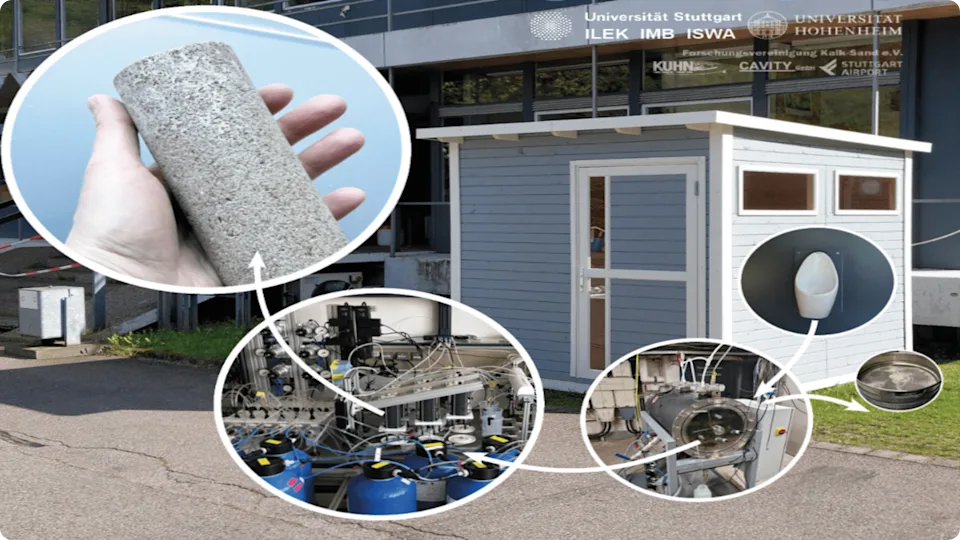Scientists in Germany have successfully turned urine into bio-concrete, as part of a project aiming to revolutionize sustainable construction by creating building materials from waste. The Institute for Lightweight Structures and Conceptual Design at the University of Stuttgart, utilized microbial biomineralization, a biotechnological process where bacteria convert urea found in urine into calcium carbonate crystals. These large circular crystals with radial striations with smooth surfaces bind sand particles together, resulting in a robust and environmentally friendly bio-concrete chemically similar to natural sandstone.
The research team developed bio-concrete as a promising substitute, through an innovative method that integrates into a ‘wastewater-bio-concrete-fertilizer’ value chain, transforming a common waste product into valuable construction materials and fertilizers simultaneously.
A research associate explained that bio-concrete is produced through biomineralization, a process in which living organisms produce inorganic material through chemical reactions. “We mix a powder containing bacteria with sand, place the mixture into a mold, and then flush it with calcium-enriched urine over the course of three days in an automated process,” she continued. “The breakdown of urea by the bacteria, combined with adding calcium to the urine, causes crystals of calcium carbonate to grow. Depending on the mold, elements can be created in various shapes and sizes, with a current maximum depth of 15 centimeters.
The team is currently assessing the bio-concrete’s resilience under freeze-thaw conditions, determining its suitability for outdoor applications. The project’s second phase will focus on optimizing bacterial activity and further refining the production process.
 To test real-world applicability, the scientists plan to construct a pilot facility at Stuttgart Airport. This facility will process urine collected from high-density public areas, transforming it into bio-concrete and extracting valuable fertilizers simultaneously. By creating a circular economy that reclaims nutrients and minimizes waste, the project exemplifies sustainable urban infrastructure.
To test real-world applicability, the scientists plan to construct a pilot facility at Stuttgart Airport. This facility will process urine collected from high-density public areas, transforming it into bio-concrete and extracting valuable fertilizers simultaneously. By creating a circular economy that reclaims nutrients and minimizes waste, the project exemplifies sustainable urban infrastructure.
You can read the original article at www.yahoo.com
